Curious Questions: How did the strawberry become the ultimate summer fruit?
Martin Fone tells a tale of fruit, sensuality and espionage as he digs in to the tale of the strawberry we know and love.


It is game, set, and match to the strawberry, Wimbledon’s favourite dessert with over 190,000 portions served during the fortnight of the All-England Championships. There is something quintessentially British about a bowl of bright red, heart-shaped strawberries, sweet and juicy in the mouth, plump and firm to the touch, topped off with a generous ladling of fresh cream. As if to assuage our guilt, they are good for us too: one portion contains 70% of our recommended daily allowance of vitamin C and more fibre than a slice of whole wheat bread. Familiar as they might be, though, there is more to the strawberry than meets the eye.
In the strictest botanical sense, the edible part of the strawberry plant is not its fruit, as it does not contain seeds. The fruits are those tiny yellow or white specks embedded into its flesh, known as achenes, each one containing a seed. There are around two hundred in each strawberry, protected by what is in effect an enlarged receptacle of the flower, which proves irresistible to humans and wildlife alike.
Even the name contains a surprise, having nothing to do with straw. Its Old English name of streawberige came from a now obsolete past-participle of the verb ‘to strew’, a reference to the sprawling nature of the plant with runners strewing flowers and achenes along the ground. It was not until the 15th century that the now familiar ‘strawberry’ was adopted.
During the Middle Ages strawberries were a favourite of Christian iconographers, appearing in pictures of the Virgin Mary, the Resurrection and in the margin of illuminated manuscripts. Their three leaves represented the Trinity, the red flesh Christ’s blood, and the five white petals the five wounds of the Passion. In Hieronymous Bosch’s Garden of Earthly Delights (1495 -1510), though, they were sensuous, erotic, and dangerous.
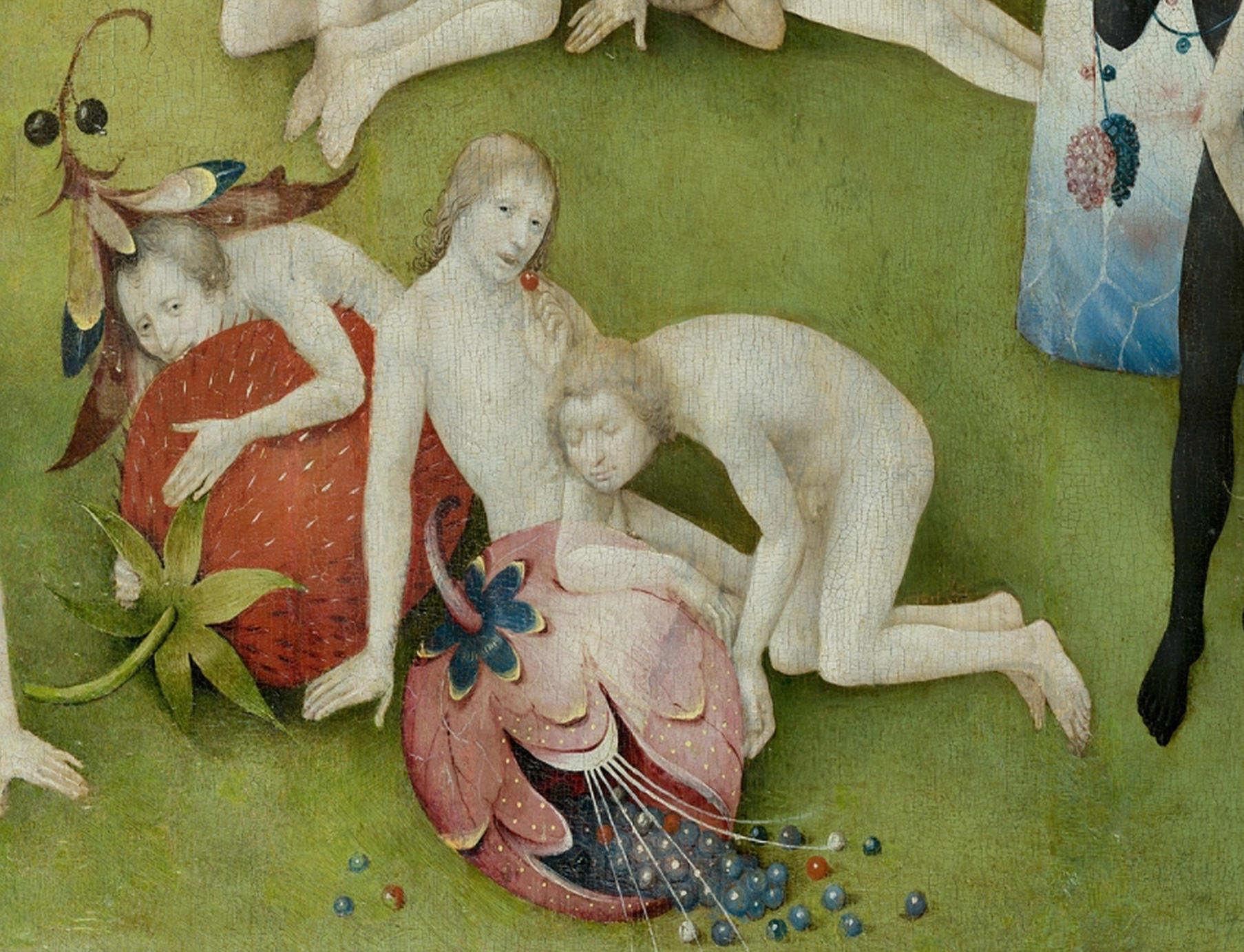
A member of the Rosaceae (rose) family, Fragaria vesca, the woodland or Alpine strawberry, grew extensively in the hedgerows of Northern Hemisphere. A welcome addition to the diet of hunter gatherers, their brilliant scarlet colour making them unmissable, even if, at a centimetre long, they are significantly smaller than their modern counterparts. In England they were either picked from the wild or plants were simply transferred into gardens from the hedgerows.
William Turner, introducing the strawberry in his The Names of Herbes (1548), simply stated that ‘every man knows well enough where they grow’, while Thomas Tusser, in September Husbandry (1557), instructed his wife to go into the garden and ‘set me a plot/ with Strawbery rootes of the best to be got:/ such growing abroade, among Thornes in the wood/ wel chosen and picked, prove excellent good’. Thomas Hill, in The Gardener’s Labyrinth (1577), recommended planting strawberries amongst rose bushes, noting that those growing in the wild were best. For Sir Francis Bacon their attraction was aromatic, ‘strawberry-leaves dying yield an excellent cordial smell’ (On Gardens (1625)).
Since Roman times strawberries were valued for their medicinal properties. John Gerard noted that ‘the ripe fruit quenches fruit, cools the heat of the stomach and the inflammation of the liver, as well as taking away the redness and heat of the face’ (Herball (1597)). Their principal attraction, though, was their taste. Contemporary cookery books contained recipes for strawberry conserves, tarts, and a pottage made with wine and spices, reflecting the mediaeval prejudice against eating raw fruits. This was attributed to the influential physician Galen’s ‘discovery’ in the second century AD that he only ‘contracted numerous and lasting ailments after eating raw fruits’, but after giving them up, ‘had never any sickness’.
Exquisite houses, the beauty of Nature, and how to get the most from your life, straight to your inbox.
Eating strawberries freshly picked with cream was considered rustic and unsophisticated, the 16th century Welsh physician, Andrew Boorde, noting that ‘raw crayme undecocted, eaten with strawberries is a rurall mannes banket…I have known such bankettes hath put men in jeopardy of their lyvves’. This did not trouble King James I who reached immediately into the basket of freshly picked strawberries even before his servant had time to mark their arrival with a speech. Robert Herrick compared his lover’s nipple to a ‘strawberry…half drown’d in cream’ (Hesperides (1648)).
The discovery of the Americas by Europeans transformed the look and taste of their strawberries, thanks to the Virginia strawberry, Fragaria virginiana, which grew in abundance on the Atlantic seaboard. Small in size but sweeter and more aromatic than the European strawberry, it first arrived in France around 1624, initially grown more for its curiosity value than to supplant its rival.
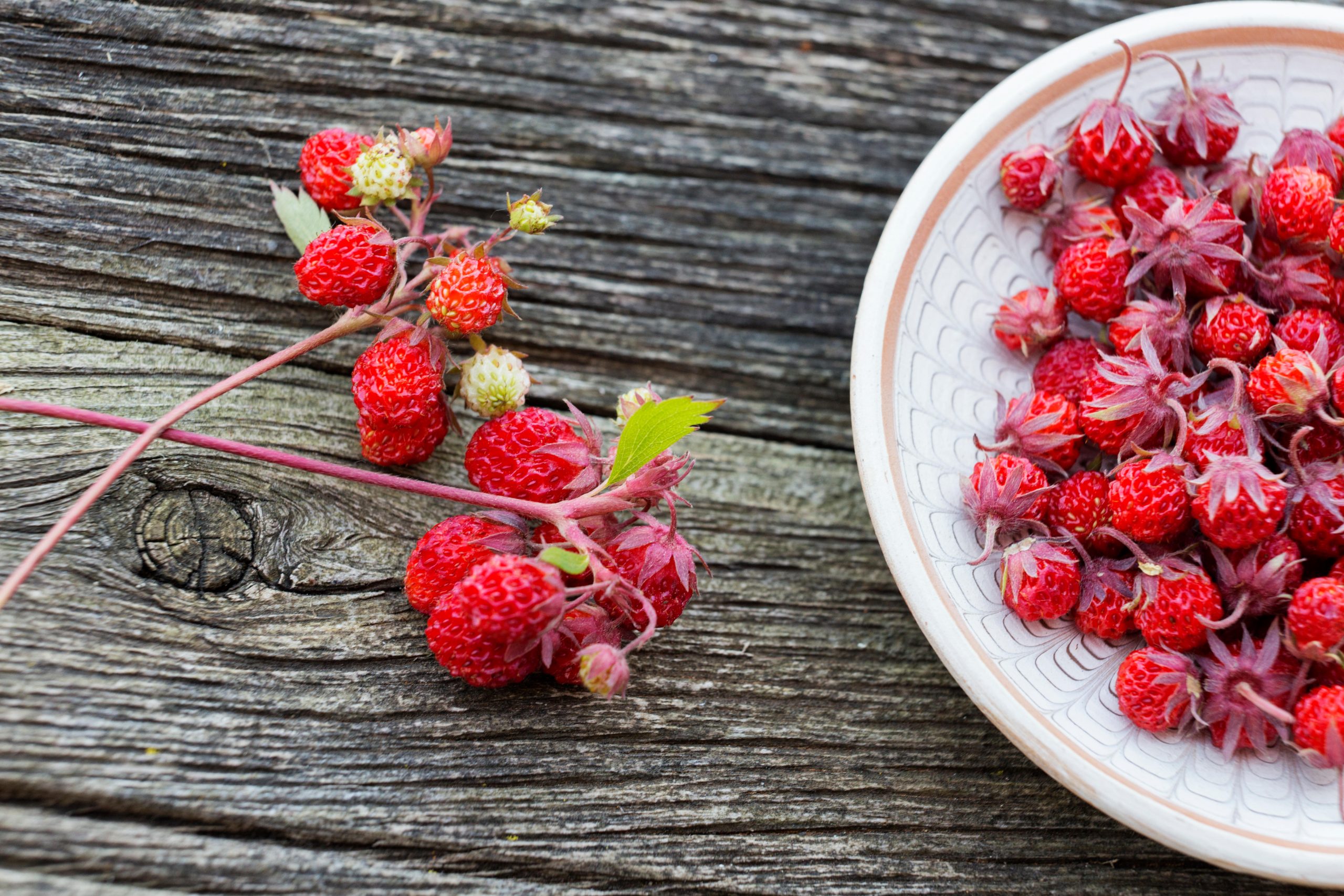
Amédée-Francois Frézier, an explorer and spy sent in 1712 to report on Spanish fortifications near Concepcion in Chile, noticed some large-fruited strawberry plants which the indigenous peoples had cultivated, and sent five plants back to his homeland, France. Unfortunately, what Frézier had failed to realise was that, unlike the European strawberries, each plant either produced only male or female flowers. The flowers produced by the female plant of what became known as the Chilean strawberry (Fragaria chiloensis) needed to be cross-pollinated by a male flower. Each of the plants he had sent back were female.
The European strawberry would not pollinate the Chilean variety, but the Virginian would. Before long, the first hybrid strawberries (Fragaria x ananassa), combining the size of the Chilean with the taste and aroma of the Virginian, were being grown in Brittany. The unusual scientific epithet, based on the French word for a pineapple, was a reference to the aroma of the leaves. Once French botanist. Antoine Nicholas Duchesne, had understood the pollination process, gardeners, keen to grow juicy, large strawberries, would plant Virginian strawberries close to a patch of Chilean.
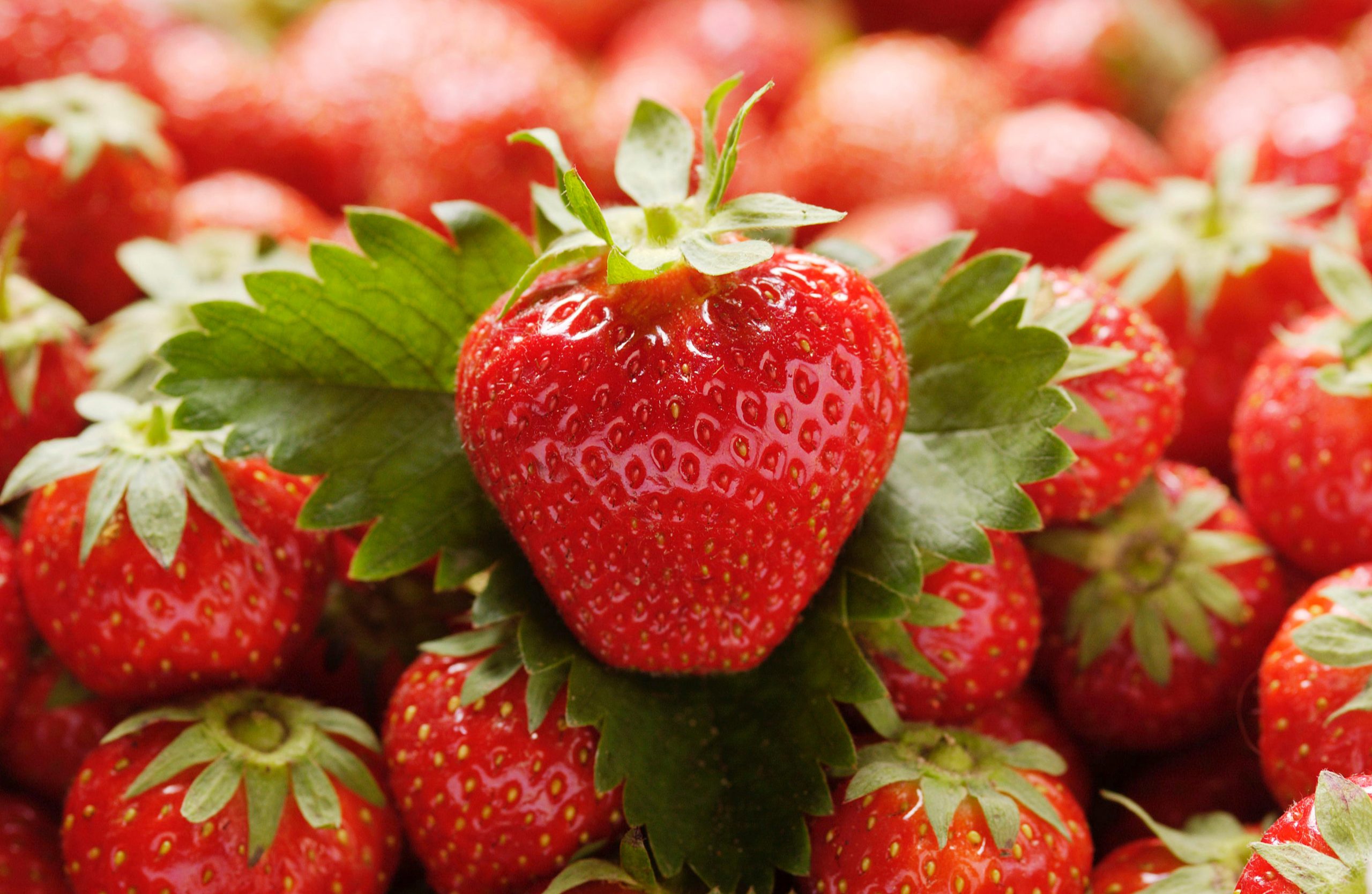
British gardeners were the most avid of strawberry breeders, cross breeding varieties to produce larger and more succulent strawberries still. To instil some order into proceedings, the Horticultural Society of London, the forerunner of the Royal Horticultural Society, in 1822 sent out a questionnaire to ‘all who are known to be attentive producers of strawberries’. James Barnet, a Scottish gardener, was given the task of reviewing the seventy responses and over four hundred parcels of plants, to produce a definitive guide of which varieties were best suited to which soil and climatic conditions.
The search for bigger, tastier, heavier cropping strawberries continued throughout the century, perhaps reaching its pinnacle in 1892 with Thomas Laxton’s Royal Sovereign, said to be unrivalled in flavour and appearance. Very sweet and with a high juice content, they were especially popular between 1920 and 1960 and were served at Queen Elizabeth II’s coronation banquet. It is the descendants of these Victorian cultivars that we grow and enjoy today.
Strawberries and cream became a favourite summer dessert, with restaurants vying to come up with ever more elaborate recipes. The celebrated chef, Auguste Escoffier, who had worked in some of London’s premier hotels, featured several in his Le Guide Culinaire (1903), including a delicious sounding Strawberries Romanov, strawberries marinated in curacao served with Chantilly cream. Unsurprisingly, strawberries and cream were served at the very first Wimbledon in 1877 and have remained a firm favourite ever since.
Some good does come from a spot of espionage, it seems.
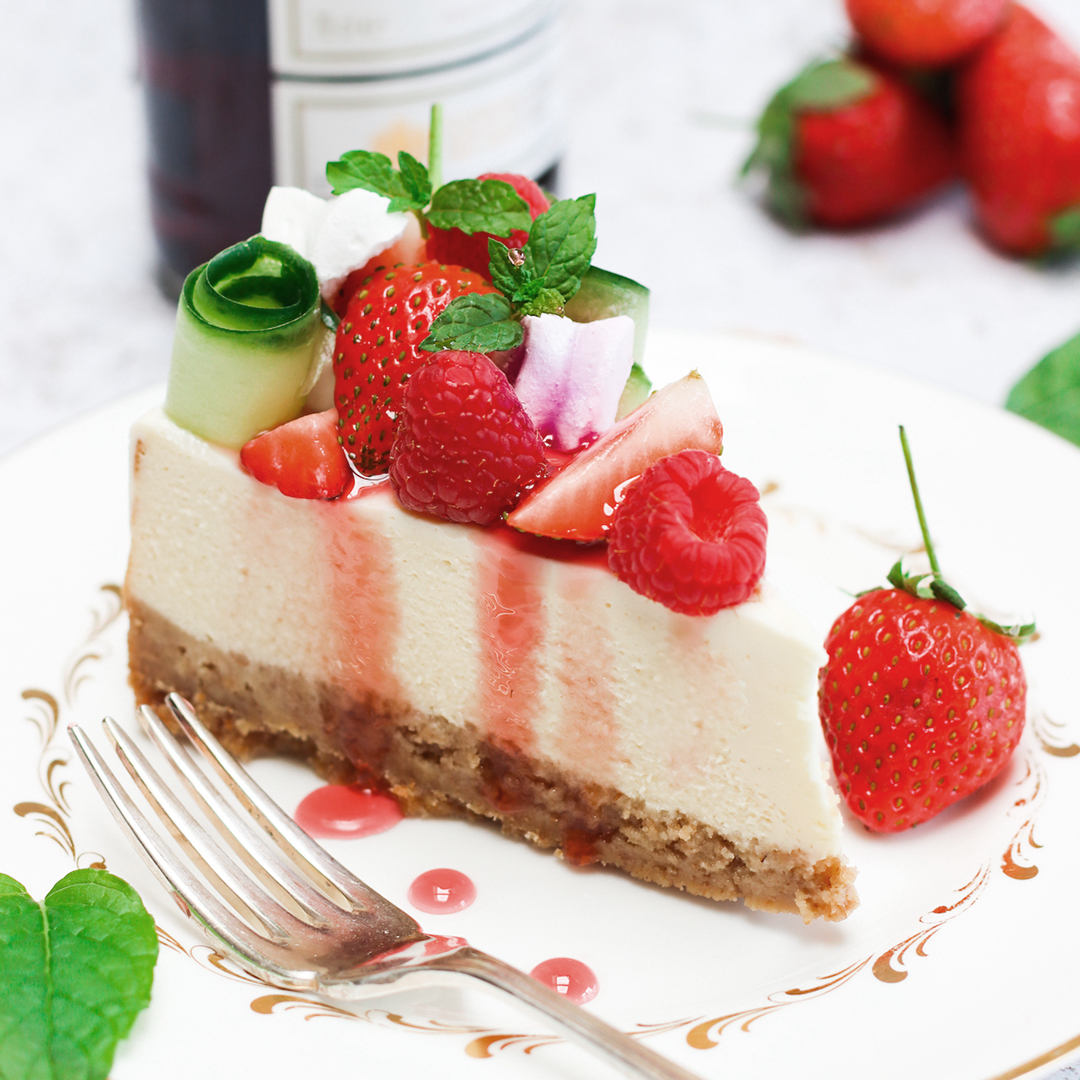
Credit: Gemma Simmonite
How to make strawberry cheesecake with a Pimm's glaze, just in time for Wimbledon
Wimbledon, one of the great highlights of the British summer, is almost upon us — and that means strawberries and Pimm's,

Credit: Peach and strawberry galette - Melanie Johnson
Recipe: Peach and strawberry galette with home-made peach sorbet
Melanie Johnson's kitchen garden doesn’t provide an abundance of peaches, but enough to make this simple, flavoursome galette – with
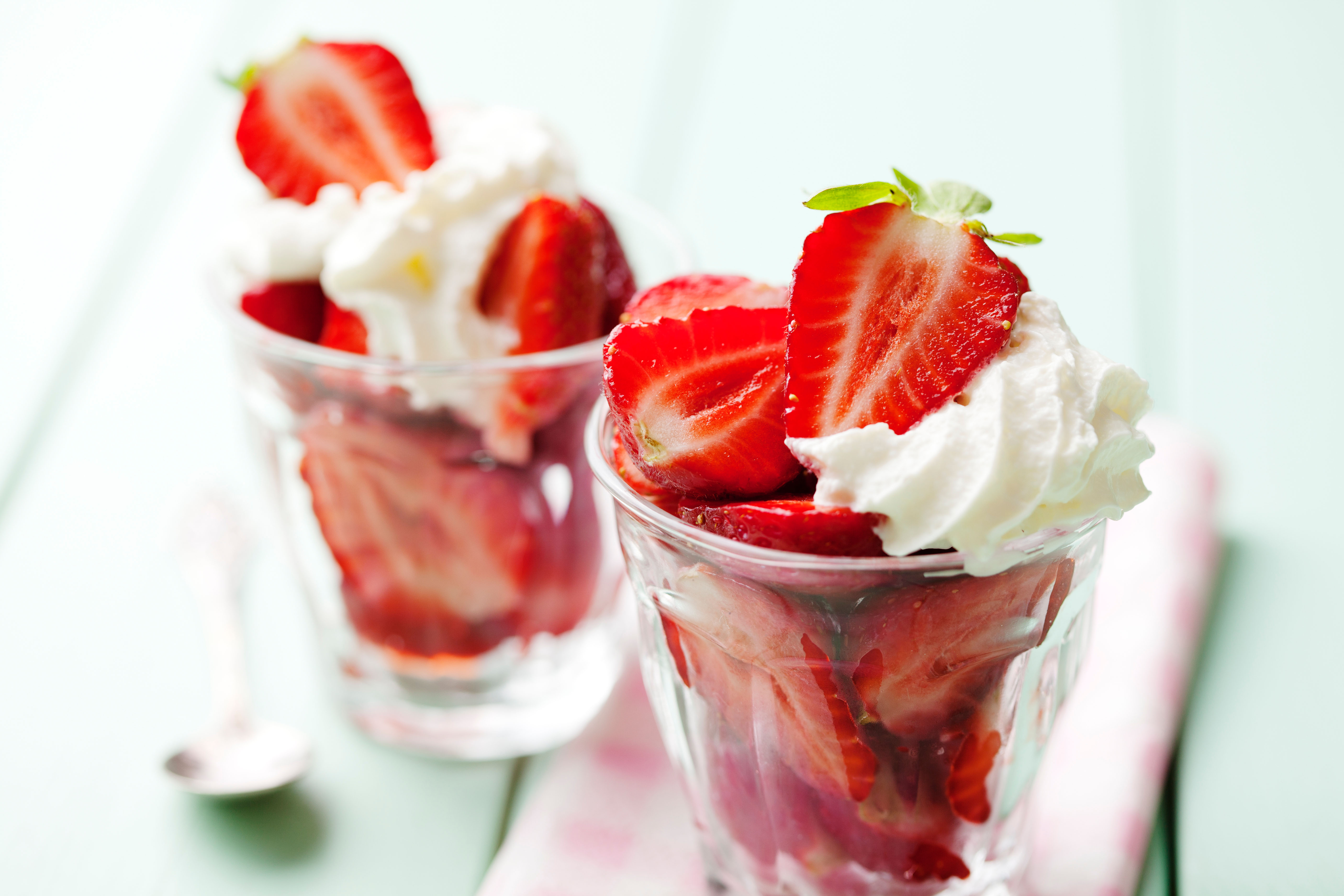
5 scrumptious strawberry recipes to make watching Wimbledon even better
A British summer without strawberries would be unthinkable.
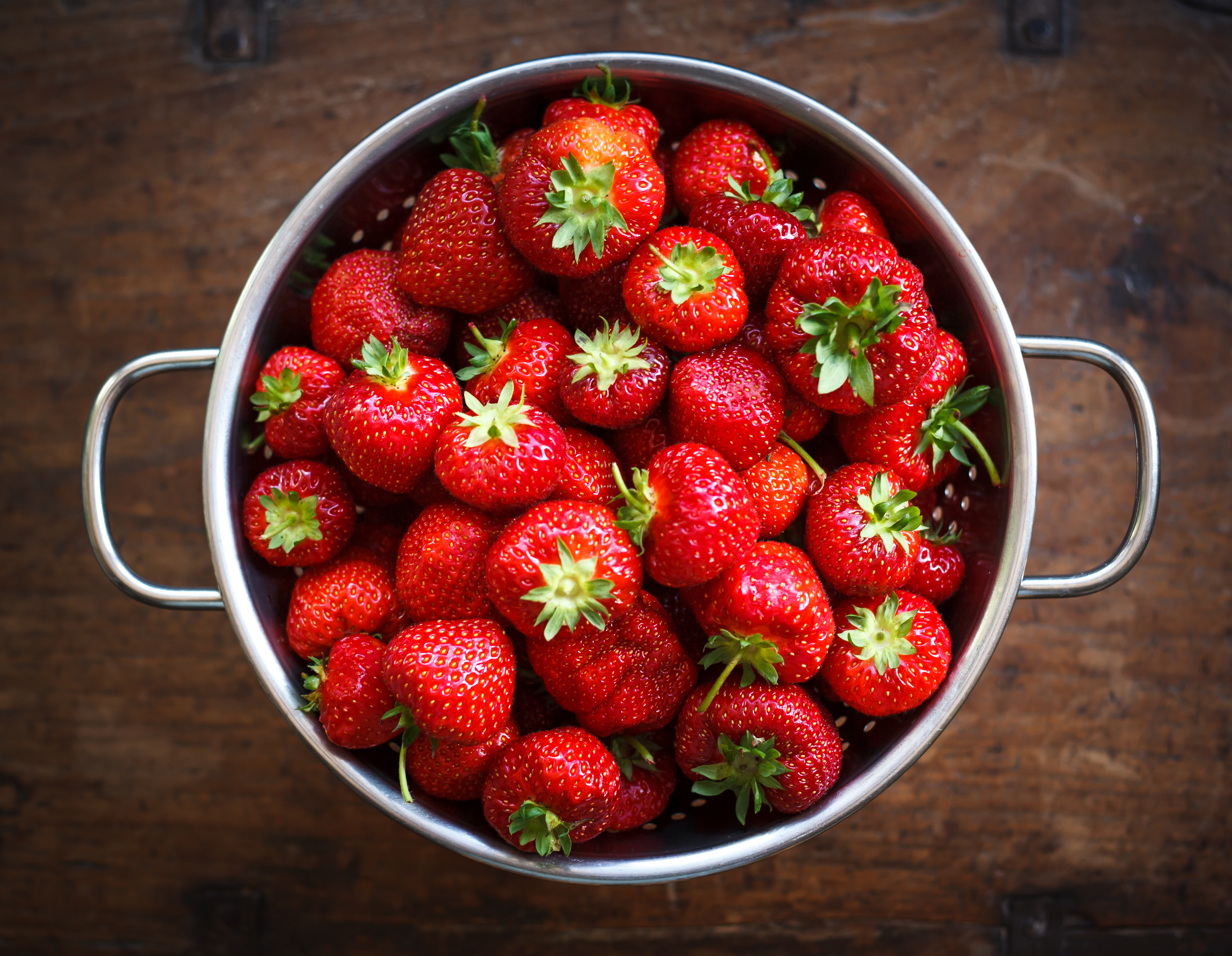
Credit: Getty Images
Tom Parker Bowles in search of the perfect strawberries and cream
Plump, buxom, sweet, juicy and with curves in all the right places, the strawberry is the very quintessence of an
After graduating in Classics from Trinity College Cambridge and a 38 year career in the financial services sector in the City of London, Martin Fone started blogging and writing on a freelance basis as he slipped into retirement. He has developed a fearless passion for investigating the quirks and oddities of life and discovering the answers to questions most of us never even think to ask. A voracious reader, a keen but distinctly amateur gardener, and a gin enthusiast, Martin lives with his wife in Surrey. He has written five books, the latest of which is More Curious Questions.
